Kirindy Reserve
Kirindy Reserve, also known as Kirindy Forest or Kirindy Private Reserve, is a critical dry deciduous forest reserve in western Madagascar. It’s a key destination for ecotourism, renowned for its extraordinary biodiversity and for being one of the best places to see some of Madagascar’s most unique and elusive wildlife.
Location and Ecosystem
- Location: Situated approximately 60 km north of the town of Morondava, Kirindy is accessible via the same route that leads to the famous Avenue of the Baobabs.
- Ecosystem: The reserve protects a significant area of what is considered one of the most threatened ecosystems in the world: the Malagasy dry deciduous forest. This forest experiences extreme seasonal changes, with a long, hot, and dry season and a short, intense rainy season. This cyclical climate has shaped the unique adaptations of the plants and animals that live here.
Flagship Wildlife
Kirindy is often highlighted for its unique fauna, particularly its high density of primates and other endemic species.
- Fossa (Cryptoprocta ferox): Kirindy is arguably the best place in all of Madagascar to see the fossa, the island’s largest mammalian predator. These cat-like creatures are often seen during the daytime around the reserve’s ecotourism lodges, especially during the October/November mating season.
- Malagasy Giant Jumping Rat (Hypogeomys antimena): This critically endangered rodent is found only in this specific region of Madagascar. The reserve is a stronghold for this species, which looks like a cross between a kangaroo and a rabbit and is a top target for wildlife enthusiasts.
- Lemurs: Kirindy boasts an incredible diversity of lemurs, with both diurnal and nocturnal species.
- Diurnal (Daytime) Lemurs: The most commonly seen is the Verreaux’s sifaka (Propithecus verreauxi), famous for its “dancing” locomotion as it leaps sideways across the forest floor. You can also spot the red-fronted brown lemur (Eulemur rufifrons).
- Nocturnal (Nighttime) Lemurs: Night walks are highly recommended and can be extremely rewarding. You can see the tiny pygmy mouse lemur (Microcebus myoxinus) and Madame Berthe’s mouse lemur (Microcebus berthae), which is considered the world’s smallest primate. Other nocturnal species include the fat-tailed dwarf lemur and the pale fork-marked lemur.
Other Wildlife and Plants
Beyond its star species, Kirindy is home to a rich variety of other animals.
- Reptiles: The reserve is a haven for reptiles, with numerous chameleon, gecko, and snake species.
- Birds: Birdwatchers can spot over 80 species, including the giant coua, crested coua, and various vangas.
- Flora: The forest is characterized by endemic plant species, including three species of the iconic baobab tree: Adansonia grandidieri, Adansonia za, and Adansonia rubrostipa.
Visitor Experience
- Activities: The main activities are guided day and night walks. The night walks are particularly popular for seeing nocturnal lemurs and other rare species.
- Accessibility: The reserve is a popular stop for travelers visiting Tsingy de Bemaraha National Park and the Avenue of the Baobabs. Most visitors stay overnight at one of the lodges or campsites within or near the reserve to fully experience both the daytime and nighttime wildlife
Spot the Giant Jumping Rat
Kirindy is situated 50 kilometres northeast of the town of Morondava, it is a privately managed forest by a Swiss NGO dedicated to selective and sustainable logging (Centre de Formation Professionelle Forestière). Observe the wildlife at Kirindy Reserve where they become more active during dawn and dusk. Also, you can take a walk to spot the nocturnal wildlife as Kirindy offers the best wildlife spotting experience including Giant jumping rat, lemurs, chameleons and Fossa.
Kirindy Reserve comprises of one of the most outstanding and threatened wildlife habitats in Madagascar: the dry deciduous forest, whose extension has been reduced to 3 percent of their original extent. Dominated by majestic baobab trees and a forest canopy of 14 m altitude, this protected area of approximately 100 square kilometres is the only place where the world’s smallest known primate, the giant jumping rat, occurs. This animal can hop like a miniature kangaroo but is also seen walking on all four limbs.
Kirindy is the best place in Madagascar to observe the Fossa, especially during the mating time between October and December. It is also home to seven species of lemur. The most common are the common brown lemurs and the Verreaux’s sifakas. The remaining species are nocturnal: the rare Coquerel’s giant mouse lemur and pygmy mouse-lemur, fork-crowned lemur, Gray mouse lemur, western fat-tailed dwarf lemur and red-tailed sportive lemur. Several bats, tenrecs, mongooses and rodents complete the mammal population. 40 birds, 50 reptile and 15 amphibian species are also found in this magnificent forest.
In the evening, a guided night walk is available to spot nocturnal animals.
The best time for photography is in the twilight hours.
Local Hotels

Unsure Where To Start?
Let’s talk about your Earth Trip


Our travel specialists are seasoned explorers with deep local insights. Whether it’s uncovering hidden gems or planning immersive cultural experiences, we design trips that go beyond the ordinary. Get in touch today!
Request A Video MeetingOther Popular Experiences










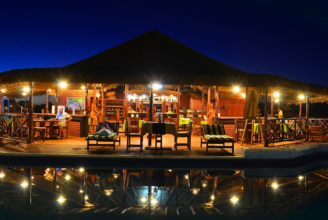
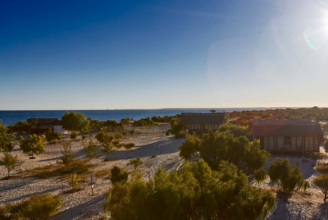
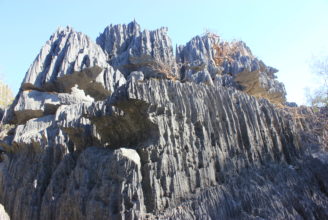
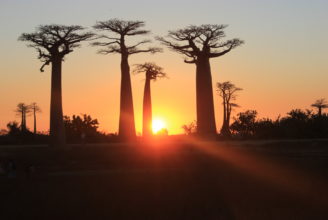
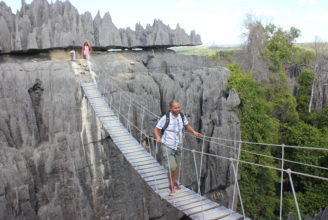
 Kirindy Reserve
Kirindy Reserve